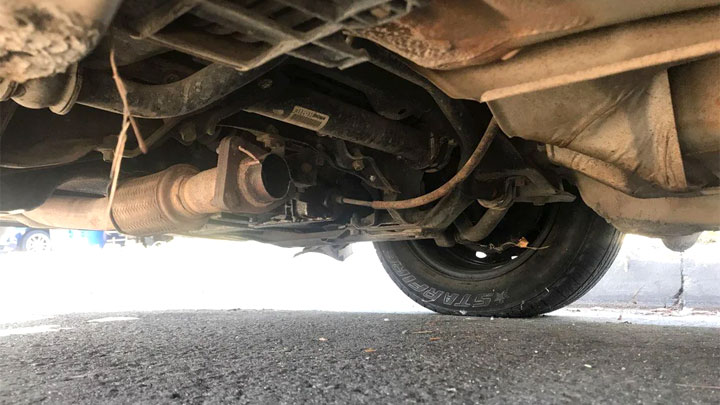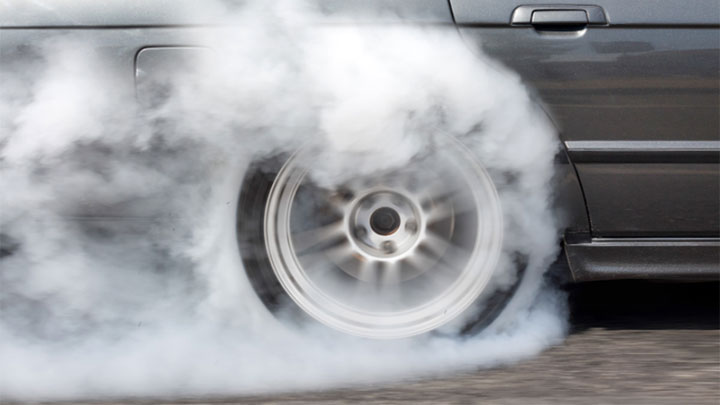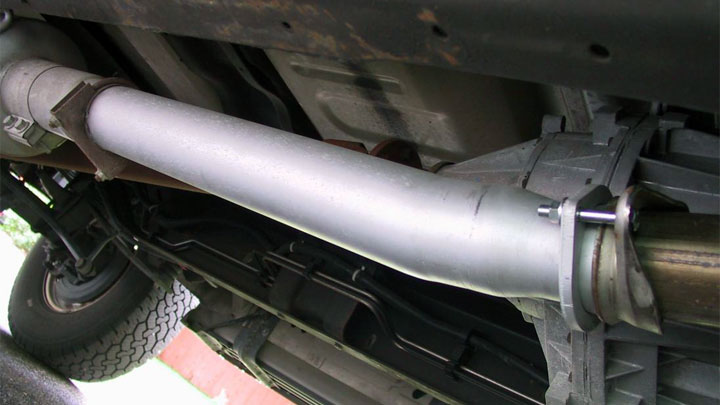Last Updated on August 8, 2022
Your vehicle has hundred of different components on it, and this can lead to quite a bit of confusion. One component that’s often talked about is the catalytic converter, and if you hang out around gearheads long enough it’s only a matter of time before you hear about a CAT delete.
What Is a CAT Delete?
A CAT delete, short for a catalytic converter delete, means removing the catalytic converter from your vehicle entirely. But is it safe to do so, is it legal, and why would anyone want to do it in the first place? We’ll answer all those questions and more for you here.
Why Would a Vehicle Not Have a Catalytic Converter?

While every vehicle today leaves the production line with a catalytic converter in the exhaust system, it doesn’t always stay that way. It almost always comes down to someone removing the catalytic converter from the vehicle, but what would anyone want to do that?
While catalytic converter theft is on the rise and may be the most common reason for cat-less vehicles in certain areas, this article will mainly cover voluntary removal of a catalytic converter. In these cases, it really comes down to performance advantages.
Catalytic converters naturally restrict the amount of air leaving the exhaust since this gives it time to work and reduces the number of harmful emissions leaving the tailpipe.
However, a side effect of this restriction is that it creates more backpressure that puts an additional strain on the engine. For most engines, this equates to about five horsepower or less in performance gains, but it’s better than nothing.
This reduction in backpressure can also lead to slightly better fuel economy, but gains in this area are also extremely modest.
Is It Possible to Drive Without a Catalytic Converter?

Yes, as a general rule it’s completely possible to drive your vehicle if it doesn’t have a catalytic converter. Your vehicle’s catalytic converter is an emissions component that turns harmful chemicals in your vehicle’s exhaust into harmless H2O.
H2O, more commonly referred to as water, simply exits your vehicle’s tailpipe instead. Some exhaust systems will even send some of the emissions back into the combustion chamber to reburn them, which reduces the total amount of harmful emissions and even has some performance advantages.
Is It Legal?
While it’s certainly possible for you to drive your vehicle around with a catalytic converter, it’s also completely illegal to do so. While each state gets to set its own laws for what’s legal and illegal, it’s currently illegal in every state to drive without a catalytic converter.
However, the main exception to this is that it’s illegal to drive on public roads without a catalytic converter. If you’re simply taking your vehicle to the track or traveling off-road, you can legally drive without a catalytic converter.
Just know the rules before completing a CAT delete and finding yourself in hot water the next time it needs an inspection or the cops pull you over.
Is It Safe?
It is completely safe for you to drive around your vehicle without a catalytic converter.
That’s because the catalytic converter is an emissions component after the engine. It’s one of the last things the exhaust travels through before exiting the vehicle, and because of this it doesn’t really impact the engine all that much.
We do recommend getting an engine tune to optimize performance if you’re completing a CAT delete, but it’s not because it’s not safe to drive without it. Instead, the tune will help improve performance levels and improve fuel economy.
What to Expect
If you plan on taking off the catalytic converter on your car there are a few different things that you need to expect going into things. We’ll highlight three of the most important changes you can expect to see right away if you decide to remove your vehicle’s catalytic converter.
#1 – Check Engine Light

If you remove your vehicle’s catalytic converter, you will get a check engine light. That’s because everything your vehicle does has sensors attached to it, and by completely removing a component you’re going to throw those sensors off.
Typically, a catalytic converter has oxygen sensors before and after it to gauge the performance and the converter, without these sensors the ECM is going to notice a fault and throw a check engine light in response.
#2 – Change in Engine Performance

Not only does an engine typically have oxygen sensors before and after the catalytic converter to gauge the health of the converter, but it will also use those sensors to help tweak engine performance to achieve more desirable emissions.
Without the sensors feeding information back to the computer it’s still going to make those adjustments, it just doesn’t need to make those adjustments. This is going to negatively affect the overall performance of your vehicle.
It’s also why if you’re looking for performance gains or want to “correctly” straight pipe your vehicle, you should tune the ECM too.
#3 – Different Sounding Exhaust

While removing your catalytic converter is often part of the process to straight pipe your vehicle and make your exhaust louder, that’s not exactly what removing the catalytic converter does. It’s certainly going to make your exhaust sound different, but what really makes the exhaust louder is removing the muffler.
Some people choose to remove all the components during this process for maximum noise gains, but there’s no doubt that removing the muffler makes the biggest impact.





Will a “Cat delete” not put the driver of the vehicle in immediate health risk ?
Without a Cat at the bottom of the vehicle, won’t the fumes from the gasoline be at a greater risk of entering the vehicle ?
The idea behind a cat delete is that you replace the catalytic converter with a section of straight pipe. You would either do this for performance reasons, or because catalytic converter theft is remarkably high in your area.
Deleting your catalytic converter releases more toxic fumes in the exhaust that are not good to breathe in. When done correctly, the cat delete still releases these fumes at the back of the car. Risk of exhaust gases entering the vehicle should be no greater than a factory exhaust system.